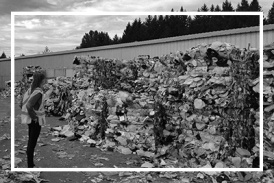First 5 California Unveils Bold 2025–2028 Strategic Plan Centered on Equity, Innovation, and Systems Change
First 5 California announces the release of a new Strategic Plan for 2025–28, laying out a bold, equity-centered roadmap to transform early childhood systems.
“Equity isn’t just a north star—it’s our responsibility,” said Jackie Thu-Huong Wong, Executive Director of First 5 California. “For too long, families have been navigating systems that are fragmented, under-resourced, and not designed with their realities in mind. Our 2025–2028 Strategic Plan is about building better systems—ones that are trauma-informed, healing-centered, and culturally responsive. This is about giving every child in California the strong start they deserve, no matter their zip code, background, or circumstance. Because when children and families thrive, California thrives.”
Developed in partnership with early childhood experts, state partners, and the 58-county First 5 Network, the Strategic Plan represents a collective commitment to addressing the root causes of childhood inequities—such as poverty, lack of access to healthcare, and systemic racism. It also responds to declining revenues from Proposition 10 by positioning First 5 California to act more strategically and sustainably.
Key strategies include:
-Advocating for transformative state and federal policies that support young children and families
-Strengthening alignment among government agencies to create more integrated services
-Expanding public awareness about childhood development and adverse childhood experiences (ACEs)
-Supporting the First 5 Network to ensure financial sustainability of child serving programs and local innovation
The plan also commits to measuring the collective impact of First 5 and its many partners through clear field indicators, including reductions in childhood poverty and ACEs, and increases in access to quality early learning and developmental screenings.
To learn more and view the full plan, visit https://www.ccfc.ca.gov.
About First 5 California
First 5 California was established in 1998 when voters passed Proposition 10, which taxes tobacco products to fund services for children ages 0 to 5 and their families. First 5 California programs and resources are designed to educate and support teachers, parents, and caregivers in the critical role they play during a child's first five years--to help California kids receive the best possible start in life and thrive. For more information, please visit www.ccfc.ca.gov.
Stacey Reardon
Change Craft LLC
+1 916-502-3799
email us here
Legal Disclaimer:
EIN Presswire provides this news content "as is" without warranty of any kind. We do not accept any responsibility or liability for the accuracy, content, images, videos, licenses, completeness, legality, or reliability of the information contained in this article. If you have any complaints or copyright issues related to this article, kindly contact the author above.
Protection Tax Helps Clients Resolve Unfiled Returns Before IRS Action Escalates
leagend T31 Sets New Standard for Affordable and Accurate OBD II Diagnostics
Couple Opens Unique '432Hz' Live Music Sanctuary on Spain's Costa del Sol for Summer Vibes and Son Awareness
Kalendarium
Więcej ważnych informacji
 Jedynka Newserii
Jedynka Newserii

 Jedynka Newserii
Jedynka Newserii

Handel

Ze względu na różnice w cenach surowce wtórne przegrywają z pierwotnymi. To powoduje problemy branży recyklingowej
Rozporządzenie PPWR stawia ambitne cele w zakresie wykorzystania recyklatów w poszczególnych rodzajach opakowań. To będzie oznaczało wzrost popytu na materiały wtórne pochodzące z recyklingu. Obecnie problemy branży recyklingu mogą spowodować, że popyt będzie zaspokajany głównie przez import. Dziś do dobrowolnego wykorzystania recyklatów nie zachęcają przede wszystkim ceny – surowiec pierwotny można kupić taniej niż ten z recyklingu.
Przemysł spożywczy
Rośnie presja konkurencyjna na unijne rolnictwo. Bez rekompensat sytuacja rolników może się pogarszać

Rolnictwo i żywność, w tym rybołówstwo, są sektorami strategicznymi dla UE. System rolno-spożywczy, oparty na jednolitym rynku europejskim, wytwarza ponad 900 mld euro wartości dodanej. Jego konkurencyjność stoi jednak przed wieloma wyzwaniami – to przede wszystkim eksport z Ukrainy i niedługo także z krajów Mercosur, a także presja związana z oczekiwaniami konsumentów i Zielonym Ładem. Bez rekompensat rolnikom może być trudno tym wyzwaniom sprostać.
Transport
Infrastruktury ładowania elektryków przybywa w szybkim tempie. Inwestorzy jednak napotykają szereg barier

Liczba punktów ładowania samochodów elektrycznych wynosi dziś ok. 10 tys., a tempo wzrostu wynosi ok. 50 proc. r/r. Dynamika ta przez wiele miesięcy była wyższa niż wyniki samego rynku samochodów elektrycznych, na które w poprzednim roku wpływało zawieszenie rządowych dopłat do zakupu elektryka. Pierwszy kwartał br. zamknął się 22-proc. wzrostem liczby rejestracji w ujęciu rocznym, ale kwiecień przyniósł już wyraźne odbicie – o 100 proc.
Partner serwisu
Szkolenia

Akademia Newserii
Akademia Newserii to projekt, w ramach którego najlepsi polscy dziennikarze biznesowi, giełdowi oraz lifestylowi, a także szkoleniowcy z wieloletnim doświadczeniem dzielą się swoją wiedzą nt. pracy z mediami.









.gif)

 |
| |
| |
|